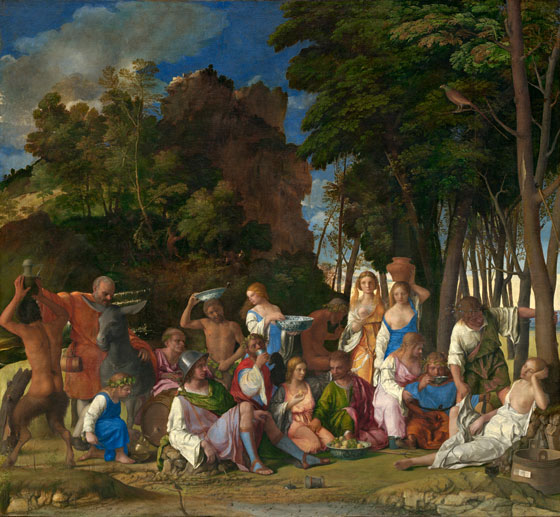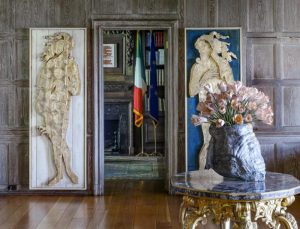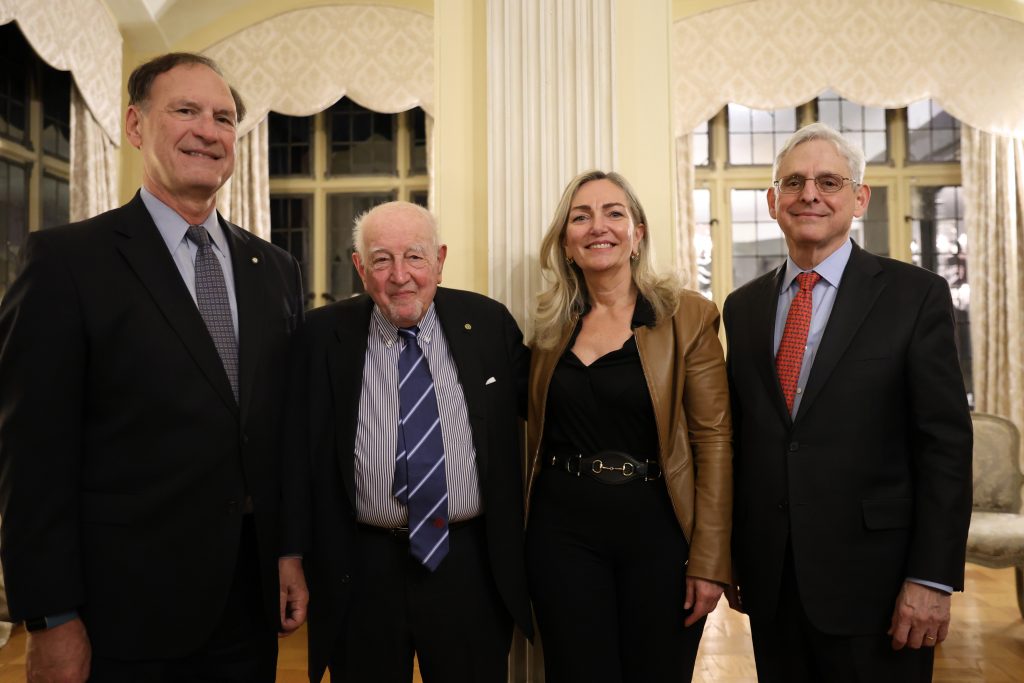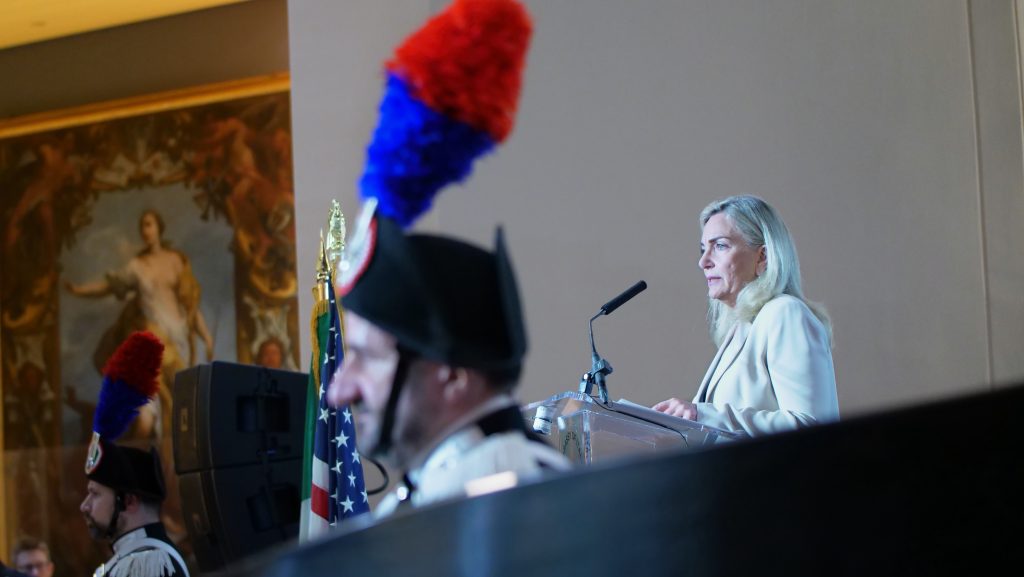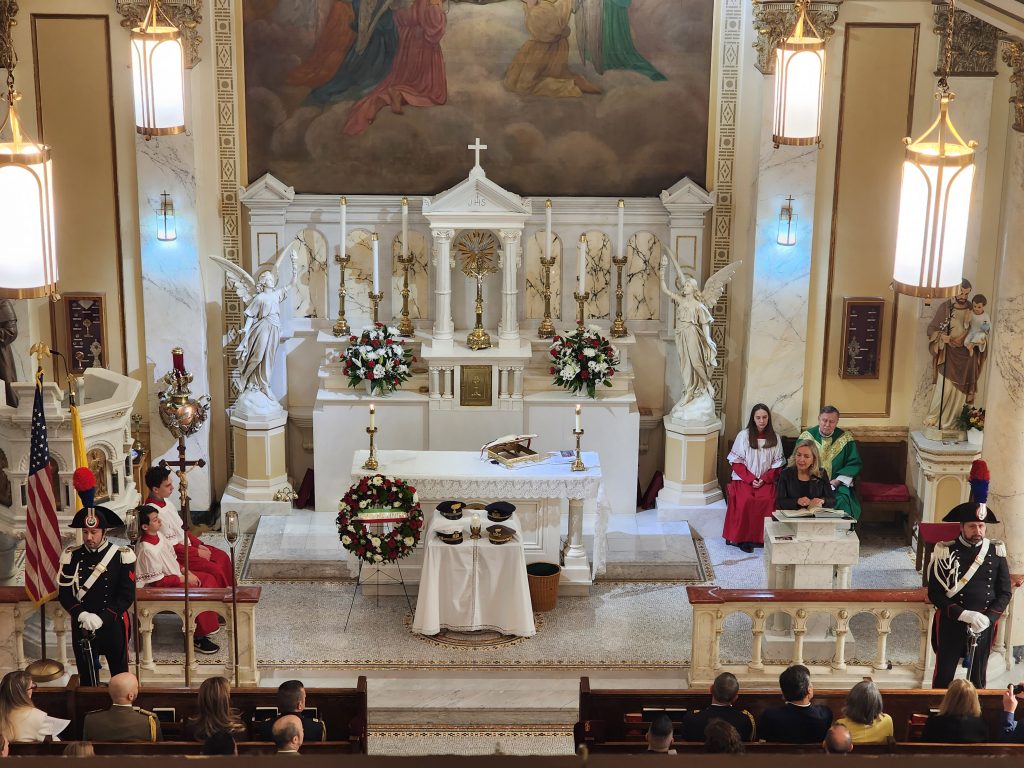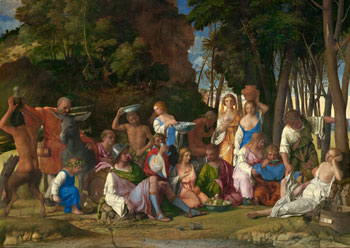
Feast of the Gods
Happy Thanksgiving! This famous canvas, The Feast of the Gods, formed the key element in one of the finest domestic decorative schemes of the Italian Renaissance—the private study of Alfonso d’Este, duke of Ferrara. The duke commissioned the two leading painters from Venice—first Giovanni Bellini and, later, his former pupil Titian—to depict bacchanals or revelries with mythological themes for the study. Begun by 1511, the room in the castle at Ferrara came to be called the Alabaster Chamber after its alabaster sculpture. The Feast of the Gods is on view at the National Gallery of Arts, in Washington, DC
The Mythological Subject
The ribald theme comes from The Feasts (Fasti), a long classical poem by Ovid that recounts the origins of many ancient Roman rites and festivals. Ovid (43 B.C.–A.D. 17), describing a banquet given by the god of wine, mentioned an incident that embarrassed Priapus, god of virility.
The beautiful nymph Lotis, shown reclining at the far right, was lulled to sleep by wine. Priapus, overcome by lust, seized the opportunity to take advantage of her and is portrayed bending forward to lift her skirt. His attempt was foiled when an ass, seen at the left, “with raucous braying, gave out an ill-timed roar. Awakened, the startled nymph pushed Priapus away, and the god was laughed at by all.” Priapus, his pride wounded, took revenge by demanding the annual sacrifice of a donkey.
The ass stands next to Silenus, a woodland deity who used the beast to carry firewood. Silenus wears a keg on his belt because he was a follower of Bacchus, god of wine. Bacchus himself, seen as an infant, kneels before them while decanting wine into a crystal pitcher. (From the National Gallery of Arts)
